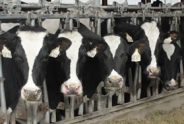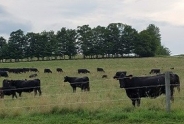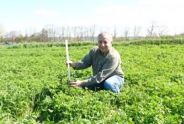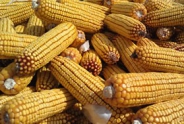Biostimulants: What are they and do they work?
Kevin Ganoe, Area Field Crop Specialist
Central New York Dairy and Field Crops
Source: blog-crop-news.extension.umn.edu/2018/12/biostimulants-what-are-they-and-do-they.html
What are biostimulants?
A legal definition of biostimulants has yet to be decided. However, the European Biostimulants Industry Council describes them as "Substances and/or microorganisms whose function when applied to plants or the rhizosphere is to stimulate natural processes to benefit nutrient uptake, nutrient use efficiency tolerance to abiotic stress, and/or crop quality, independently of its nutrient content."
There are many categories of biostimulants. The most popular are humic acids, seaweed extracts, liquid manure composting and beneficial bacteria and fungi.
- Humic and fulvic acids - parts of soil organic matter resulting from the decomposition of plant, animal, and microbial residues.
- e.g. peat, mineral deposits of leonardite and soft coal
- Dark in Color
- Can increase the cation exchange capacity
- Seaweed Extract
- Derived through different extraction processes.
- Soluble powders or liquid.
- Liquid manure composting
- Made by mixing manure water and a blend of proprietary materials thought to feed specific bacteria in the manure. This provides adequate conditions for microbial growth. The liquid is then used as a biofertilizer.
- Beneficial bacteria and fungi - concentration of bacteria and/or fungi in the soil that help with root growth.
- E.g. Bacillus and Rhizobium fungi
- Majority of products marketed toward large scale commercial agriculture.
Biostimulants have been shown to increase many factors that affect plant growth including, root growth, root diameter, soil water holding capacity, increased microbial activity leading to increased nutrient availability and many more. Most of the time, however, responses are highly variable. It depends on weather, soil type, organic matter content, tillage system, and the type of crop rotation. One thing to remember is that these products cannot provide nutrients and be considered a biostimulant. They do not affect a fertilizer, but can increase/speed up the process of availability.
What does the research say?
Most data on these products is for high value horticultural crops instead of a corn/soybean system. However, research at the University of Minnesota has shown that in most cases those products are ineffective and do not live up to the expectation. For example, the products thought to increase enzyme activity rarely do compared with plots that did not receive the treatment. Products thought to provide better overall growing conditions and increase grain yield also do not show any improvements when compared to untreated.
Recommendations
When thinking about using these products we recommend doing a replicated strip trial before integrating them into your entire operation. To see these products make a difference and pay for themselves, consider contacting a local or regional Extension Educator, or your crop adviser to help you set up a trial and interpret the results.
By: Anne Nelson and Paulo Pagliari
UMN Extension Nutrient Management
Support for this project was provided in part by the Agricultural Fertilizer Research & Education Council (AFREC).
Upcoming Events
Labor Roadshow IX
December 1, 2025
December 9 - December 10, 2025December 17 - December 18, 2025December 22, 2025
In-person and online events to keep NY's agricultural employers informed and prepared for today's labor challenges.
2026 Dairy Day
January 13, 2026 : Dairy Day - Hamilton
Hamilton, NY
Lunch included
January 14, 2026 : Dairy Day - Ballston Spa
Ballston Spa, NY
Lunch included
2026 Corn & Soybean Day
January 20, 2026 : Corn & Soybean Day - Hamilton
Hamilton, NY
Lunch included. 2.75 DEC Credits available
January 21, 2026 : Corn & Soybean Day - Ballston Spa
Ballston Spa, NY
Lunch included. 2.75 DEC Credits available
Announcements
Statewide Field Crop Pathology Needs Assessment Survey
Your input is wanted for identifying priorities!Sign Up for Our Weekly E-Newsletter
We send out a bi-weekly e-newsletter that has announcements, upcoming programs, and opportunities for you! Registration is quick, easy, and free. Click here to sign up today!Farmers Can Join MeatSuite For Free!
MeatSuite.com is a free resource provided by Cornell University where NY meat farmers can create a farm profile and list their bulk (wholes, halves, quarters) and bundled (i.e. Grilling Bundle) meat products.Why should farmers join?
1. It's free and easy!
2. Connect with more local customers. In the past year the MeatSuite.com farm directory had 8,300 visits from New York consumers. Farm profiles get as many as 25 views per month from potential local customers. We also spotlight MeatSuite farms on social media and bring attention and purchases to farms through highlights and giveaways.
How do I join?
Farmers can visit https://www.meatsuite.com/farmers/ to create a free farm profile. You must list at least one product for your farm's profile to go live. You'll also have access to Cornell's free Meat Price Calculator, a helpful tool for pricing your meat to make a profit.
While you're on MeatSuite, check out the "Creating Consumer-Friendly Bulk Meats" publication on the log-in page. It has tips on how to create bulk meat products that are easier for first-time buyers to say "yes" to.
If you have any questions as you create your farm profile or products, we're here to help! Please email Matt LeRoux at mnl28@cornell.edu.




